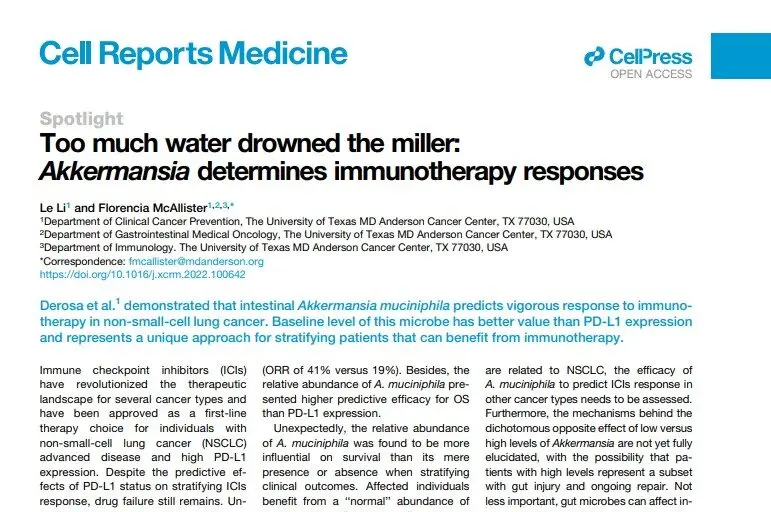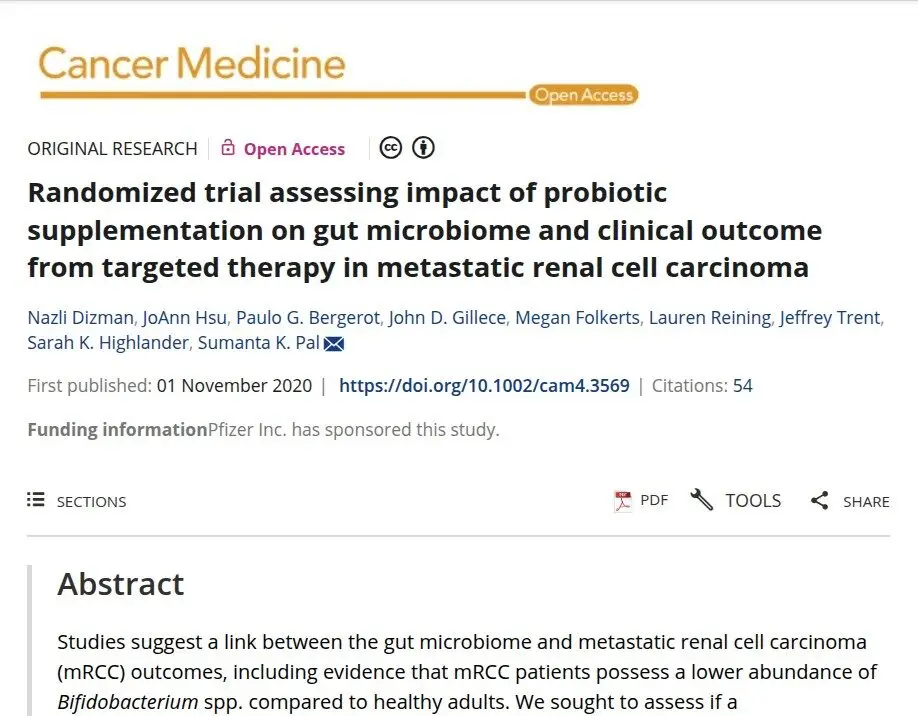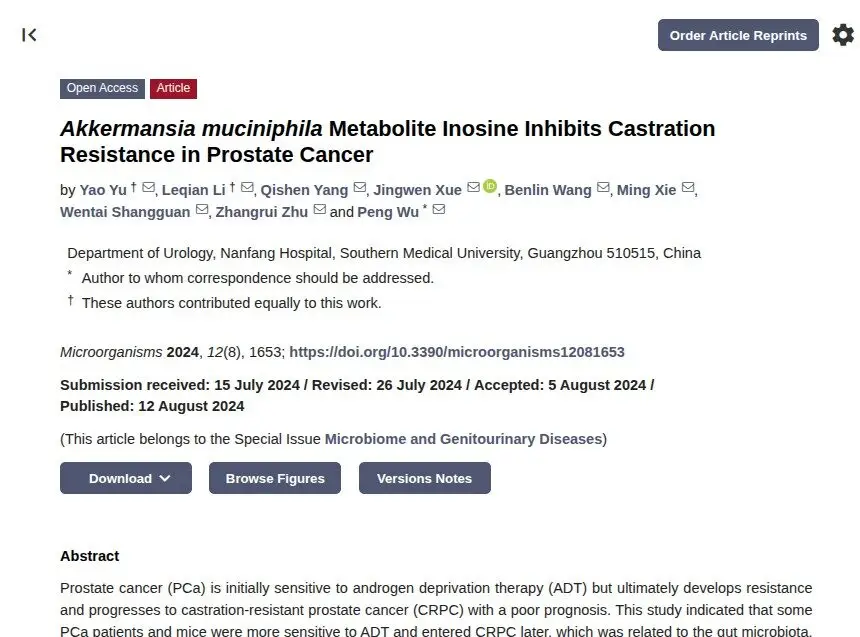A 2022 study in 338 lung cancer patients is analyzed here. A balanced or typical 4.8 level of akkermansia was associated with substantially improved outcomes from immunotherapy in lung cancer. For those where immunotherapy was their first line of treatment, response rates more than doubled in the presence of akkermansia.
Reseachers highlighted the negative impact of antibiotics in the two month run up to treatment, a poor progosis resulted independent of any other variable. And, these patients developed a relative higher akermansia levels >4.8% along with high clostridium. The combined outcomes was about a halving of overall survival times, compared even with those without akkermansia. In comparision, patients with typical levels less than 4.8% had almost doubled survivial times compared to no akkermansia, and 3.5x the antibiotic treated patients. Its unclear how this effect would be seen in other cancer forms.
“A. muciniphila-based probiotic or prebiotic supplementation accompanied with its symbiont may recruit beneficial microbe to enhance ICI response but, if present at over-abundant levels, may be counterproductive”







